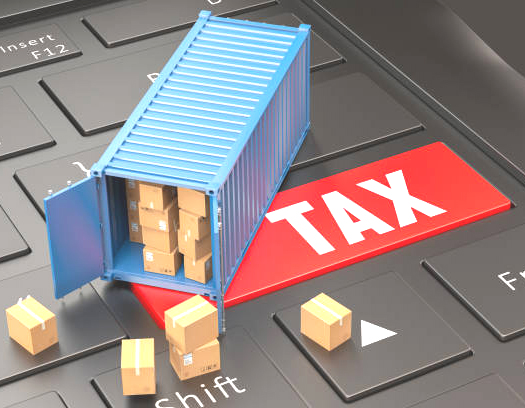The impact of duties and taxes on shipping costs can vary significantly depending on the country of origin and the destination country. Each country has its own customs regulations, tariff rates, and taxation policies that determine how much exporters and importers will have to pay. Here’s a general overview of how duties and taxes can impact shipping costs in different regions:
1. United States
Duties:
- The U.S. applies import duties based on the Harmonized Tariff Schedule of the United States (HTSUS), which categorizes goods and assigns a specific tariff rate.
- Duties can range from 0% to over 20%, depending on the product category.
- Some goods, like food, medicine, and certain raw materials, might have lower duties or be duty-free under free trade agreements (FTAs) like USMCA (formerly NAFTA) or CPTPP (Comprehensive and Progressive Agreement for Trans-Pacific Partnership).
Taxes:
- The U.S. does not have a nationwide VAT (Value-Added Tax), but it does have state-level sales taxes that might apply to imported goods when sold to consumers in specific states.
- There is a customs user fee (around 0.3464% of the value of the goods), which impacts the cost of importing goods.
Impact:
- The impact on shipping costs can be significant, especially for high-duty items. FTAs can help reduce or eliminate duties and simplify clearance procedures.
2. European Union (EU)
Duties:
- The EU uses the Customs Tariff of the European Union, which is largely based on the Harmonized System (HS), and applies tariffs on imports from non-EU countries.
- Duties range from 0% to 12%, though some products, such as industrial goods, can face higher duties, while agricultural products may face even steeper tariffs.
- Many goods imported from countries with FTAs, such as South Korea or Japan, may be subject to zero duties or significantly reduced tariffs.
Taxes:
- Value-Added Tax (VAT): The EU has a VAT system, which is applied to most goods and services, including imports. The rate varies from 15% to 27% depending on the country.
- The VAT is typically paid by the importer upon arrival of goods, and can be refunded if the goods are resold.
Impact:
- The combination of duties and VAT can significantly increase shipping costs to the EU. However, the single market makes intra-EU shipping relatively inexpensive, and FTAs often eliminate or reduce duties.
3. China
Duties:
- Customs duties in China can range from 0% to 50% depending on the product type.
- For low-value goods (under $50), duties may not be applied, but customs declaration fees may still apply.
- FTAs (such as the China-Australia FTA) can reduce or eliminate duties on qualifying products.
Taxes:
- Value-Added Tax (VAT): China applies VAT on imports, typically at rates of 13% for most goods and 9% for certain goods, like food and pharmaceuticals.
- Consumption Tax is also levied on specific products, such as luxury goods, alcohol, and tobacco.
Impact:
- The high VAT and customs duties can increase the total shipping cost significantly. However, FTAs with countries like Australia and New Zealand help reduce the burden.
4. India
Duties:
- Customs duties in India are typically between 5% to 30% depending on the type of goods being imported.
- Certain products, like electronics, luxury goods, and cars, face higher duties, while raw materials and essential goods may face lower duties.
- FTAs (such as the India-ASEAN FTA) can lower or eliminate import duties on qualifying goods.
Taxes:
- Goods and Services Tax (GST): India applies GST on imports, which can be 5%, 12%, 18%, or 28%, depending on the product.
- The GST is levied in addition to the customs duties and is paid by the importer at the time of customs clearance.
Impact:
- High GST rates and import duties on many goods can significantly increase shipping costs. However, lower duties for essential goods and FTAs may reduce costs for certain products.
5. Canada
Duties:
- Customs duties in Canada can range from 0% to 35%, with most goods falling within the 5% to 15% range.
- Canada’s Customs Tariff is used to calculate duties, and FTA agreements (like USMCA or the Canada-European Union CETA) can eliminate or reduce duties on eligible products.
Taxes:
- Goods and Services Tax (GST) of 5% applies to most imported goods, but the Harmonized Sales Tax (HST) can apply in certain provinces, which ranges from 13% to 15%.
- The tax is added to the customs value of the goods, including duties.
Impact:
- While GST and HST may add to the cost, USMCA and other FTAs have made it more affordable for U.S. and Canadian businesses to trade, reducing customs fees and duties.
6. Australia
Duties:
- Customs duties are generally 5% on most goods, but this can increase for specific products like luxury items or vehicles.
- FTA agreements, such as the Australia-China FTA, help reduce or eliminate tariffs on certain goods.
Taxes:
- Goods and Services Tax (GST) is charged at 10% on most imports.
- GST is calculated on the customs value of the goods, including duties and shipping costs.
Impact:
- GST can significantly increase the overall shipping costs to Australia, especially for high-value items. However, FTAs can help reduce or eliminate some duties.
7. Brazil
Duties:
- Import duties in Brazil are generally between 0% and 35%, with high duties on items such as electronics, luxury goods, and automobiles.
- Exemptions or reductions may apply under certain trade agreements (e.g., the Mercosur trade bloc).
Taxes:
- Import Tax (II): This can range from 0% to 35%, depending on the product.
- Value-Added Tax (ICMS): This varies by state and can be between 7% to 18%.
- Tax on Circulation of Goods and Services (PIS/COFINS): These taxes apply at a rate of around 9.25% combined.
Impact:
- High import duties and taxes make shipping costs to Brazil more expensive. Trade agreements within Mercosur may help reduce these costs for member countries.
Summary:
The impact of duties and taxes on shipping costs depends on several factors:
- Tariffs: Vary widely based on the product type and country of origin.
- VAT/GST: A significant cost in countries like the EU, India, and China.
- FTA Benefits: FTAs can reduce or eliminate duties and simplify customs processes.
Key Takeaways:
- Countries with higher duties and taxes (like Brazil, India, and China) often have higher shipping costs due to additional charges at customs.
Countries with FTAs or customs unions (like the EU, USMCA, and ASEAN) may offer reduced tariffs and faster clearance, resulting in lower shipping costs.




